Verdict
The MacBook Pro 14-inch (2023) is another fantastic Apple laptop, designed with those who need serious power on the go in mind. The upgrades over the previous version are minimal, but that doesn’t stop this from being one of the best laptops you can buy.
Pros
- Huge amount of internal options
- Stunning screen
- Stays quiet and cool
Cons
- Even more expensive than before (for those in the UK)
- Lack of Face ID makes the notch feel dated already
- Pricey to upgrade the memory
Availability
- UKRRP: £2149
- USARRP: $1999
- EuropeRRP: €2399
- CanadaRRP: CA$2599
- AustraliaRRP: AU$3199
Introduction
You can tell a lot about an Apple product by how it gets announced. The MacBook Pro 14-inch (2023) for instance didn’t get a dedicated event, but rather a simple press release and accompanying highlight reel.
The relative lack of furore around the latest edition of the MacBook Pro line says a lot and it’s not surprising to see this a very minor upgrade that shouldn’t interest anyone who splurged on either the MacBook Pro 14 or 16-inch from 2021.
There are the usual speed boosts to the internals plus a smattering of welcome extras.
Design and Keyboard
- Good selection of ports
- Excellent keys and a responsive trackpad
- Sleek design
The MacBook Pro 14-inch (2023) is a fantastic machine to look at, even if it sticks to the same overall blueprint as its 2021 predecessor. Considering this was a huge refresh in terms of design for the series, it was always unlikely Apple would deviate too far for the follow-up.
The MacBook Pro line is actually a little confusing, mostly due to the existence of the 13-inch M2 Pro model that is more akin to the MacBook Air than these actual pro-aimed models. Why Apple keeps that model around I am not sure, but it’s the only Pro model that hasn’t shifted to this new design language.
The two higher-end Pro (those available with M2 Pro and M2 Max) chips come in a duo of sizes: 14-inches and 16-inches. You can spec up either model to accommodate your specific needs, and whatever the 16-inch model can do, the 14-inch alternative can do too.
I’ve used the 14-inch model for this review and I think it’s the perfect size for a portable, creative laptop. The 16-inch gets more screen – which is great if you’re working with media, photos or artistic stuff – yet the 14-inch display is very roomy, and it feels noticeably better than the 13.3-inch screen on the older MacBook Pros.
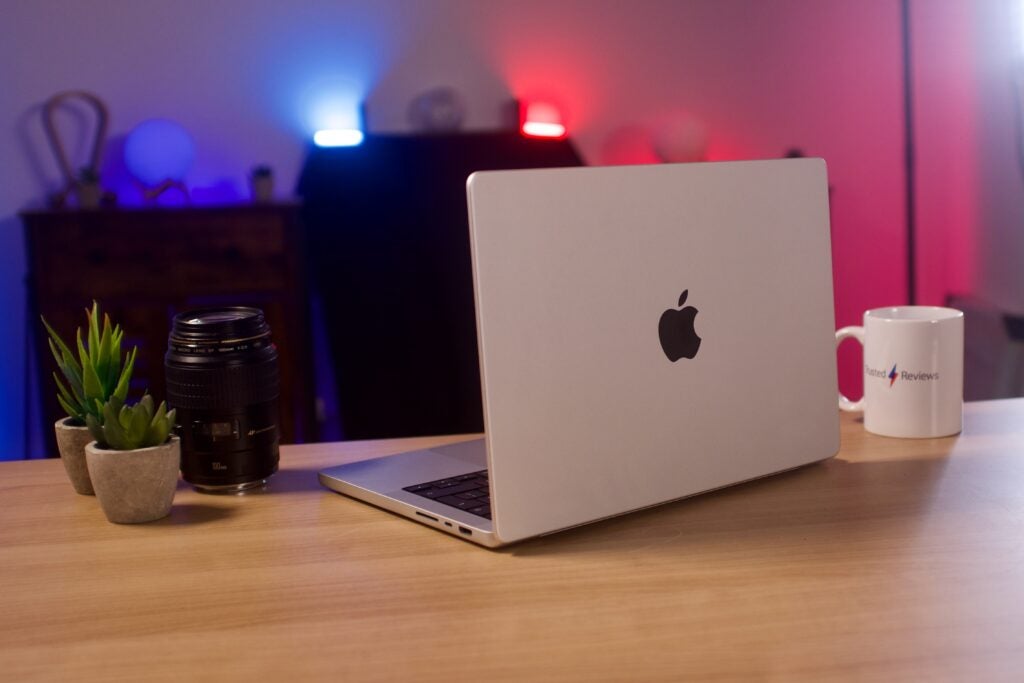
It’s far from the slimmest machine around, however I am not counting that against it. Apple has listened to feedback and focused more on adding back skills users bemoaned were removed before than doing whatever it could to make a thin machine. Considering what’s on offer, the 1.6kg (1.63kg for the M2 Max) weight and 1.55cm height aren’t bad at all.
The boxy design reminds me of MacBook Pro models before the big 2016 design shift, and the selection of ports is reminiscent of those machines too. No longer does Apple force you to rely solely on USB-C ports, instead there’s a wider choice. One side houses two Thunderbolt 4 USB-C ports, a mic/headphone port and the MagSafe charging connector. The other opposing side gives you a full-size SDXC card reader, another Thunderbolt 4 USB-C port and HDMI.
That HDMI port has picked up some new tricks, including the ability to output 8K at 60Hz and 4K at 240Hz. Apple isn’t specifically calling this HDMI 2.1, as skills like VRR are not supported.
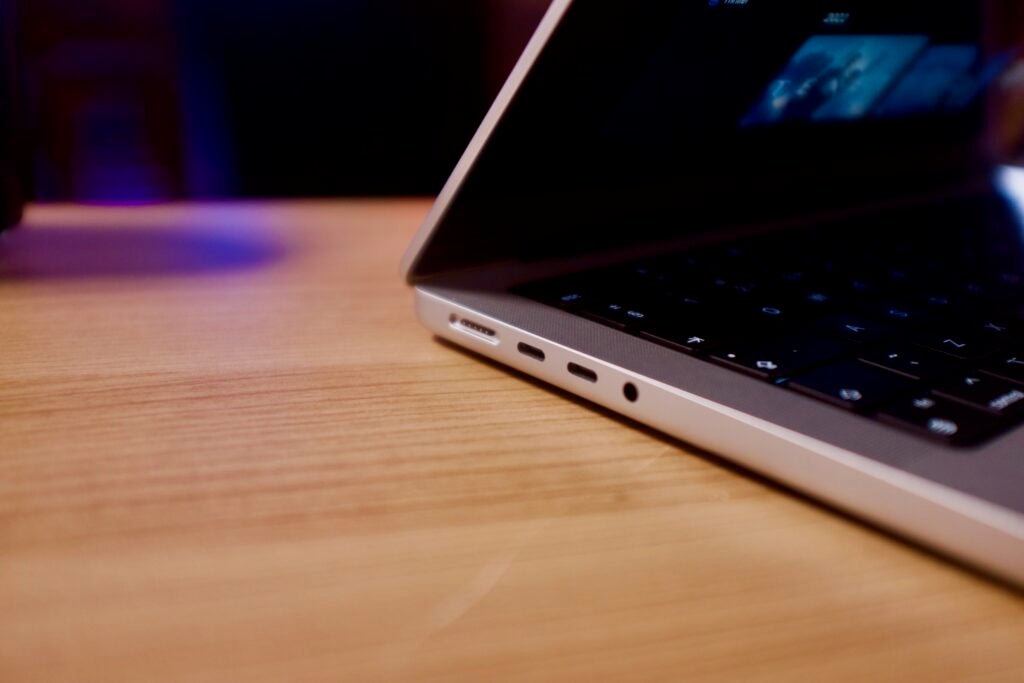
The returning ports are wonderfully welcome and I hope they don’t disappear again until there’s a viable alternative. Always having to have a card reader or dongle handy for importing camera snaps or plugging into an external monitor was a pain, and while many may still need to keep one around (there are no standard USB-A ports and CFExpress cards are becoming more common) it’s no longer vital.
MagSafe was another welcome return when it was added again with the 2021 versions, and it’s become my favoured method of charging here. While all three USB-C ports can charge, the included magnetic MagSafe charger clips in reassuringly and pops out if you trip over the cable – something I do a lot more than I would like to admit. The braided cable is now colour-matched to the machine – like it is with the MacBook Air series – and it offers faster charging, though this does depend on which screen size you go for.
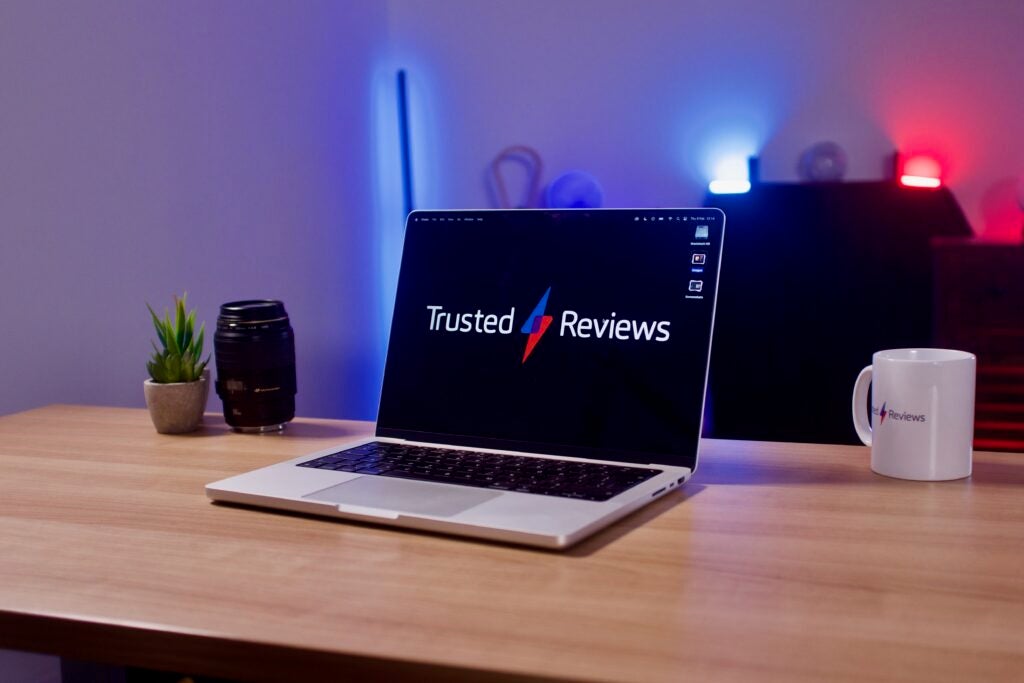
I don’t think it’s too glowing to say this is a near-perfect piece of laptop design. The 14-inch straddles the fine line between a big enough screen and excellent portability, while the thicker chassis (when compared to MacBook Pro models pre-2021) allows for a better port selection and bigger batteries without it being too heavy or big.
The keyboard and trackpad are both great, too. The keys have a black surround that makes them easier to use in low-light situations and they’re big enough to easily hit. The controversial Touch Bar remains resigned to the 13-inch MacBook Pro, with a large function row and Touch ID sensor sitting above the traditional keys here.

Apple continues to make the best trackpads on any laptop: large, responsive and with haptic feedback that would fool most into thinking the pad is actually moving.
Screen
- It gets ridiculously bright for HDR content
- 14 and 16-inch size options
- Notch isn’t intrusive but could be more useful
As with most of the aspects of this laptop, the display is the same as Apple used in the previous iteration. This comes with many positive elements, along with a few negative ones too.
My biggest issue with the display is the notch is still here – and it’s still seemingly not really doing that much, aside from maybe making room for the good 1080p webcam. I don’t agree with the view that the notch gets in the way – most apps work around it and black bars cover it in video – but at least use that space to add an extra biometric unlocking feature into the machine.
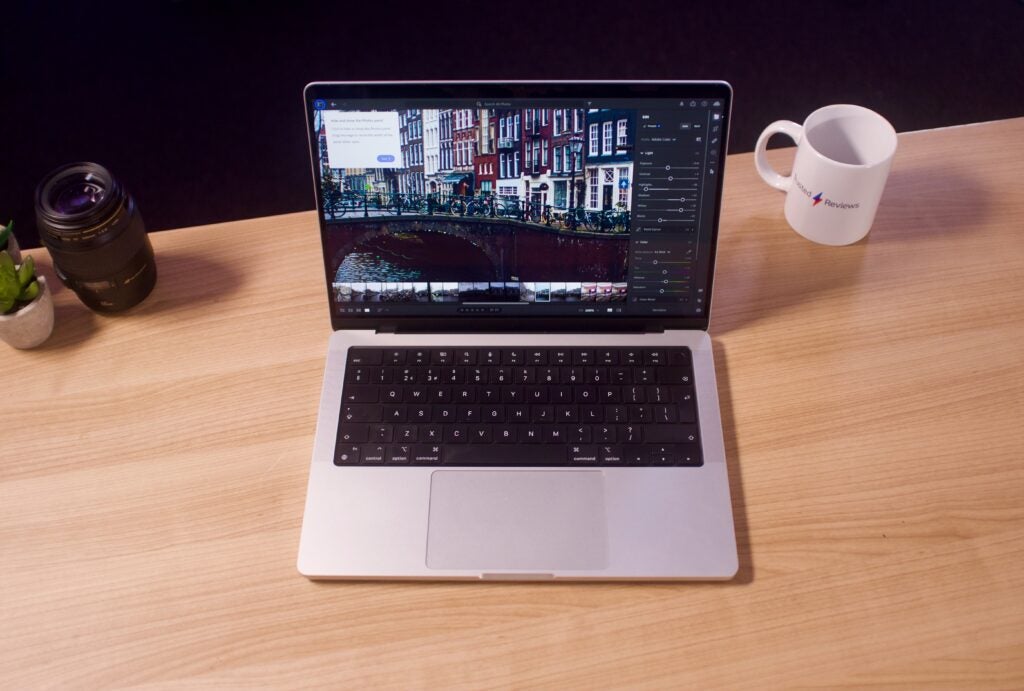
The MacBook 14-inch 2023 (along with its larger 16-inch cousin) totes the best screen on a MacBook and aside from the performance ceiling, getting a better display is one of the biggest reasons to go for this over the MacBook Air. It’s sharper (the resolution here is 3456 x 2234), brighter and smoother.
In terms of headline specs, the MacBook 14-inch has a MIni LED panel which is a huge upgrade over competing machines that use LCD panels. It combines the deep contrast, inky black and punchy colours typically associated with OLED panels of this size with the high brightness levels of LCD, essentially giving you the best of both. Now, I don’t think the screen is as punchy as OLED, but it’s not far off.
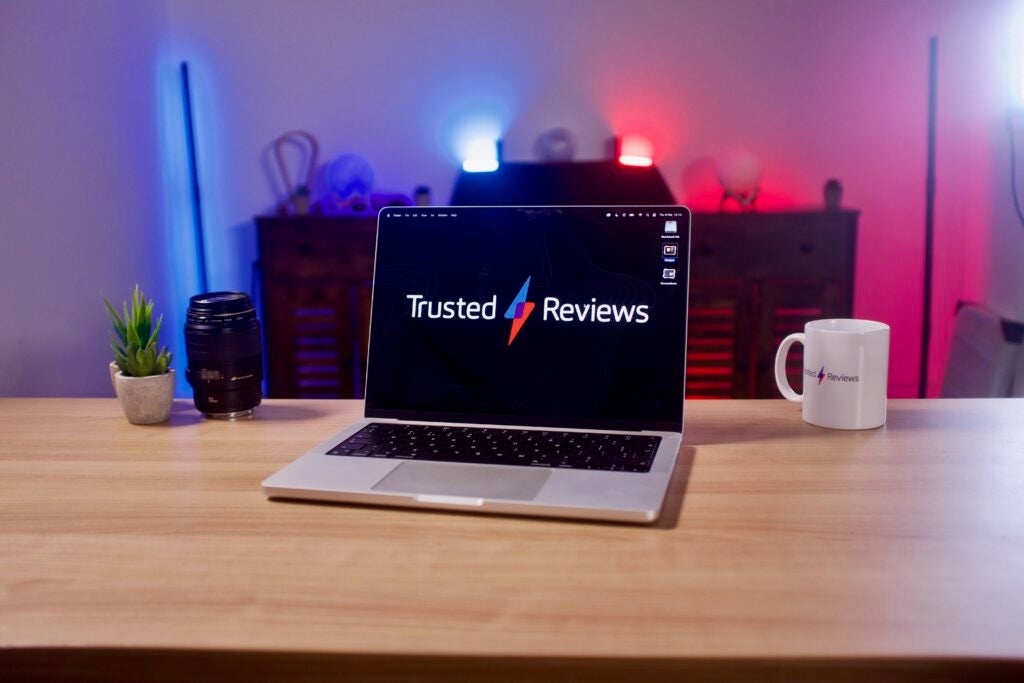
The screen is designed for HDR, and HDR workflows. If you edit video for HDR production this display is fantastic, and it can playback the content as well as some of the best TVs. Spider-Man Into the Spiderverse in Dolby Vision 4K looked fantastic when I streamed it from iTunes. In The Batman, the high levels of brightness show up when there are fiery explosions in dark scenery – Apple says these situations can hit 1600 nits, while standard HDR is around 1000 nits.
ProMotion remains a way to speed up, and slow down, the refresh of the display up to 120Hz and I still don’t find this as much of a game-changing feature as I do on touchscreen devices. Maybe it would be more welcome if this Mac was more of a gaming machine.
I’d love to see a touchscreen MacBook Pro at some point (rumours say it could be 2025 when one finally arrives) but the form factor would need to change, as would the software. Just adding a touch display to this would make no sense, and I am glad it remains a non-touch panel.
Performance
- M2 Pro and M2 Max chipset options
- Up to 96GB RAM – though only available when you order
- Not a massive upgrade over the M1 Pro/Max series
It’s on the inside where most of the changes for this 2023 model are found. There are new chips, more memory options and Wi-Fi 6E – great if you’ve recently upgraded your router.
Both 14-inch and 16-inch models can come with either the M2 Pro (cheaper) or M2 Max (pricier) chipsets and can be specced out with lots of storage, memory and so on as you open your wallet wider. Certain upgrades (the high-end GPUs, or 96GB memory) require the higher-end Max chip.
Here’s a quick look at the differences between the M2 Pro and the M2 Max.
| M2 Pro | M2 Max | |
| CPU | Up to 12-core CPU | 12-core CPU |
| GPU | Up to 19-core GPU | Up-to 38-core GPU |
| Memory | Up to 32GB | Up to 96GB |
| Memory Bandwidth | 200GB/s | 400GB/s |
The sheer number of options for customisation here makes judging performance across the whole range a little tricky. All the benchmarks below are for an M2 Pro chipset with a 12-core CPU, 19-core GPU and 32GB memory. This set of specs will be sufficient (and likely) overkill for a lot of you reading this review, but if your workload is particularly memory or GPU-intensive, then know that you can pay for more performance.
All customisations need to be made when purchasing and there’s no way to increase the amount of memory after the fact. It’s also a very pricey process, especially if you want swathes of memory.
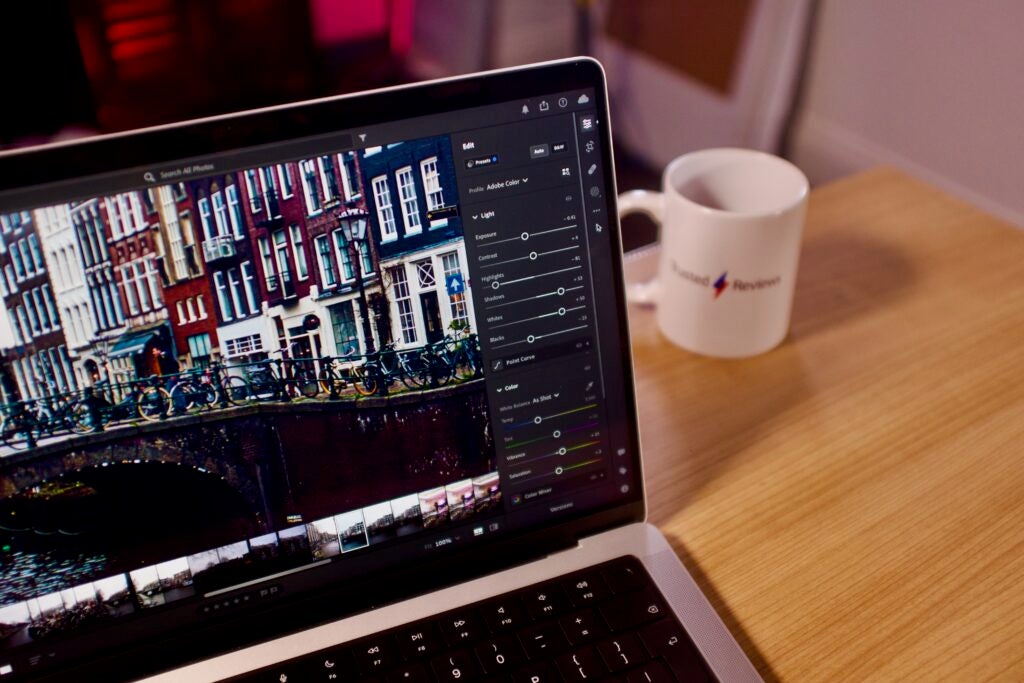
I ran a number of benchmarks on my M2 Pro review unit and the scores showed a minor upgrade over the M1 Pro. Scores in general benchmarking tools like Cinebench R23 and Geekbench 5 show small, but always welcome, jumps. I would expect far bigger scores from an M2 Max chip.
In the GPU benchmark Basemark, the graphical grunt of the machine makes itself known. The score of 5148 is a small upgrade on the M1 Pro (4837), but a massive upgrade over an Intel Windows machine like the Lenovo 7i Slim Pro with an RTX 3050 which scored a far lower 1766.
These scores back up my view that this machine isn’t positioned at those who upgraded last time, instead it’ll offer much more of a bump over those coming from high-end Intel machines. This is where you’ll notice the biggest upgrades, in everything from export and render times on video editing to other creative tasks.
Apple’s Silicon has come a long way in the few short years it has been on the market. It was great to begin with, but there were some concerns over app compatibility. Now, however, I have struggled to find any app that doesn’t work or doesn’t have a dedicated Apple Silicon version. Chrome, Photoshop, Lightroom – the list goes on. Even apps that run using the Rosetta 2 translation layer, like Steam and games like Football Manager 2023, offer better performance than the outgoing Intel Mac systems.
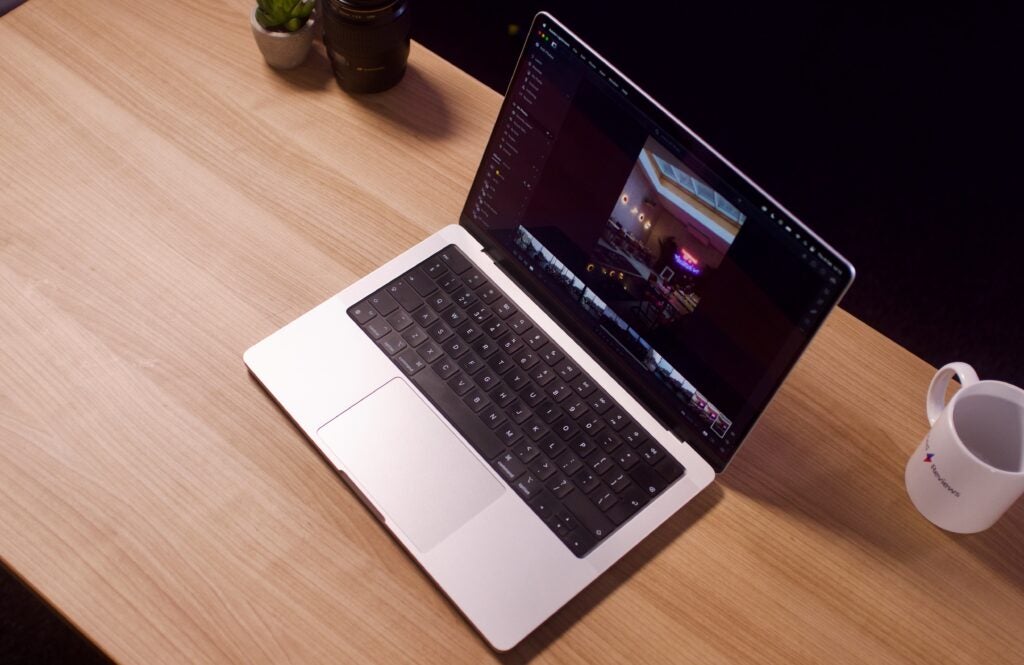
MacOS remains a system that’s not designed for gaming. There’s certainly some power here that could run even some demanding titles, but the breadth of titles simply isn’t available to make spending this sort of money worth it.
Performance isn’t just how fast a system runs, though. The MacBook Pro 14-inch (2023) impressed me elsewhere, with its speakers pushing out fantastic audio that sounded full and rich. I also found the fans rarely kicked into gear – in fact, the only time I could hear them was when I was running benchmarking software.
Battery Life
- One of the best laptops around for battery life
- Magnetic MagSafe charging port is welcome, as is USB-C charging
The endurance is the final piece of the jigsaw here, turning an excellent creative laptop into a fantastic machine. While you’ll get the most juice from the 16-inch machine, the 14-inch model has impressed me thoroughly throughout the review period,
Using the MacBook Pro 14-inch (2023) has made me rethink what to expect from battery life on a laptop. I don’t need to take my charger to the office unless I am going to be doing hours of GPU-intensive tasks, as it’ll comfortably last a full workday without dipping below 30-40%. If I was more careful with closing applications, or switching to Safari rather than Chrome, I think it could last two days. Of course, your mileage may vary – but I struggle to see anyone disappointed by the battery life here.
The machine also performs the same whether you’re running off power or the battery. If you’re on a plane or train away from a plug that performance won’t dip or struggle. I tested these running benchmarks and they were always the same.
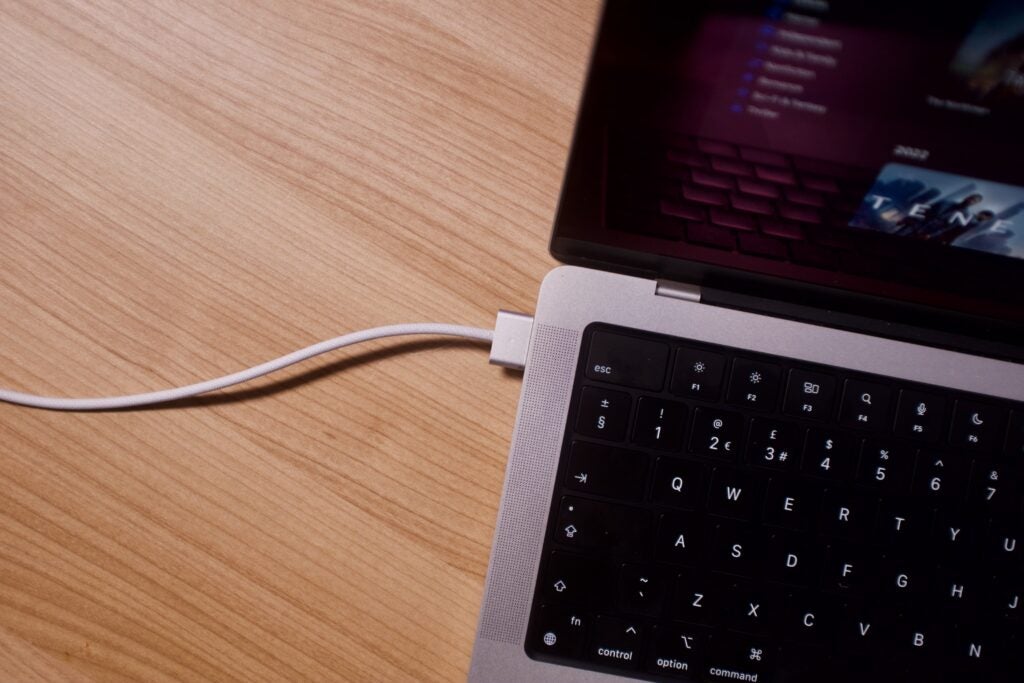
I didn’t use a similarly specced M1 Pro 14-inch Mac from last year, but from my time with other M1 Pro and M1 Max machines that battery life seems to be mostly the same. This is in my tests, although Apple does like to go big with its battery claims by using metrics like offline video playback.
I put Apple’s two battery claims to the test – and my results actually surpassed them. It claims 18 hours of playback of a 1080p movie in the Apple TV app, with brightness set to half. When I recreated this test, my test machine lasted for just over 19 hours. Another one, set to test web browsing endurance should get me 12 hours according to Apple’s claims, whereas I actually got minutes under 14 hours. Of course, neither of these are typical use cases, but it does show the chipset and battery combination is very efficient.
Charging speeds vary depending on the model you choose and whether you use MagSafe or USB-C. The 14-inch model comes with either a 67w or a 96w adapter, while the 16-inch comes with a 140w plug.
Latest deals
Should you buy it?
You’re after a seriously powerful, creative machine: The MacBook Pro 14-inch (2023) offers a seriously wide selection of powerful internals, including up to 96GB memory and plenty of cores for both the CPU and GPU.
You upgraded to the MacBook Pro M1 Pro or M1 Max: This is a minor update, likely intended for those holding onto older Intel Macs. Aside from the small boost to performance and improved internal options, the upgrades are minimal.
Final Thoughts
If you invested heavily in the previous generation MacBook Pro with its M1 Pro and M1 Max chips, then there’s very little here to entice an upgrade – however if you’ve been hankering for an upgrade to an ageing machine, or are looking at switching to MacOS, then the MacBook Pro 14-inch (2023) is a stunning machine.
The various price rises (prices have stayed in the States, but risen in regions like the UK) are tough to take, especially when the costs for additional memory and storage are so high. This machine, as a result, is for a very specific type of customer – for once, the Pro moniker isn’t simply a marketing term like it is with the AirPods Pro or iPhone 14 Pro.
For many, the MacBook Air M2 is more than enough laptop for a lot less money. You don’t need the MacBook Pro for basic 4K video editing or RAW photo editing, as the M2 chip is more than capable of completing those tasks.
But, if you need that extra hit of GPU and CPU then that’s where this MacBook Pro comes in. It also offers a far better display, the option of larger sizes, more ports and faster charging. Once again, Apple has made one of the best laptops around.
How we test
Every laptop we review goes through a series of uniform checks designed to gauge key aspects including build quality, performance, screen quality and battery life.
These include formal synthetic benchmarks and scripted tests, plus a series of real-world checks.
FAQs
While both the 14 and 16-inch models can support 96GB memory, you will need to go for the M2 Max model to go past 64GB.
It’s available in both silver and grey – with the pictures in this review being the silver model.

























